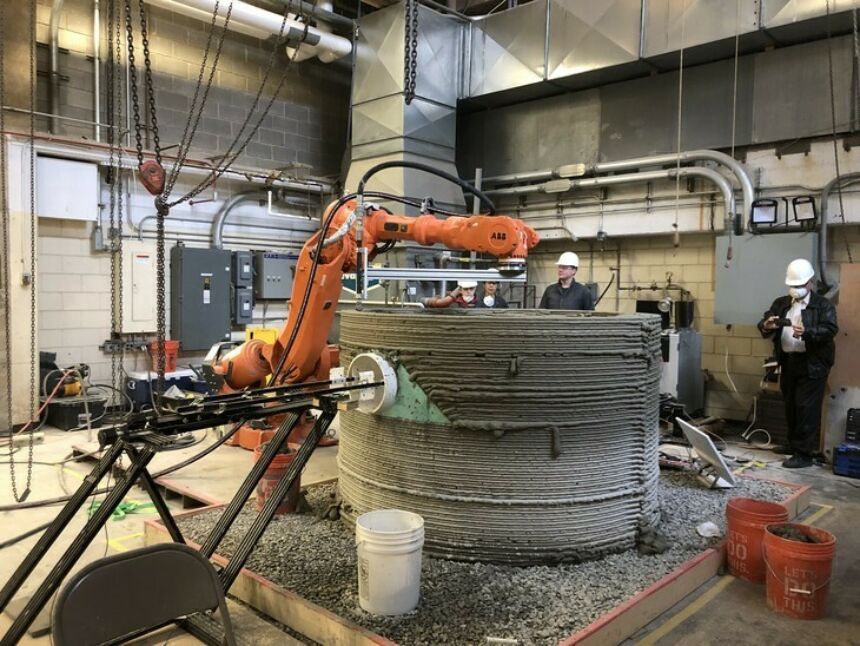March 28, 2019
Penn State 3D printing team advances in NASA competition

by Megan Lantz, Department of Civil and Environmental Engineering
UNIVERSITY PARK, Pa. — Penn State’s 3D printing team, PennStateDen@Mars, has advanced to Phase 3, Level 4 of the NASA 3D-Printed Habitat Competition, after capturing a third-place victory in Phase 3, Level 3 of the competition.
The purpose of NASA’s 3D-Printed Habitat Competition is to curate new methods of developing a sustainable habitat in a variety of environments, specifically by using recycled materials and/or materials local to the specified environment. Essentially, the competition is seeking to find possible methods of constructing livable conditions by using 3D printing technology. When assessing the structures, judges will be considering the Martian environment.
Phase 3, Level 3 required teams to create a 3D-printed habitat for the seal test stage of the challenge. The shelters were analyzed for their ability to hold a seal, for strength and for durability in extreme temperatures.
To secure their third-place victory and $83,755.92 in earnings, PennStateDen@Mars executed a hydrostatic leak test. This test consisted of filling the 3D printed structure with water to a particular level and then measuring the amount of time taken for water to escape the tank.
Aleksandra Radlińska, assistant professor of civil engineering, added that the structures for future colonization of Mars need to be tight to ensure no radiation could possibly enter the shelter and that there would be no oxygen leakage.
The entry for Phase 3, Level 3 of the competition was prepared in the 3D printing lab on the University Park campus in December.
The successful completion of the seal-test challenge allowed the team to move on to the final level: constructing a 3D printed habitat that will be sustainable on Mars. This part of the competition will take place April 29 to May 4 in Peoria, Illinois. The winner of this level of the competition will receive a $500,000 prize to aid future research and development.
“The requirements are very ambitious for this challenge because this one is head to head, toe to toe, in a large, open space when the printing has to happen in front of judges,” said Radlińska, when discussing Phase 3, Level 4 of the competition. “There’s only one opportunity to do it right.”
According to Radlińska, the competition not only pushes the team in the realm of 3D printing, but it also strengthens their skills in teamwork and timely delivery of the built product.
NASA has a desire to explore deeper space and to send missions to the moon and Mars, said Radlińska, but this can’t be done unless there’s a place to shelter both humans and equipment. Due to the cosmic radiation and solar and cosmic parts, NASA needs to perform tests such as these to make sure anyone traveling to Mars or the moon for prolonged periods of time will be safe.
PennStateDen@Mars is led by Shadi Nazarian, associate professor of architecture, and José Duarte, the Stuckeman Chair in Design Innovation and director of the Stuckeman Center for Design Computing. Other faculty members involved include: Sven Bilén, department head of the School of Engineering Design, Technology and Professional Programs (SEDTAPP) and professor of engineering design, electrical engineering and aerospace engineering; Ali Memari, professor of architectural engineering and civil engineering, and the Bernard and Henrietta Hankin Chair in Residential Building Construction; Nicholas Meisel, assistant professor in SEDTAPP; and Randall Bock, assistant research professor in the Department of Agricultural and Biological Engineering.
Originally published by Penn State News.
